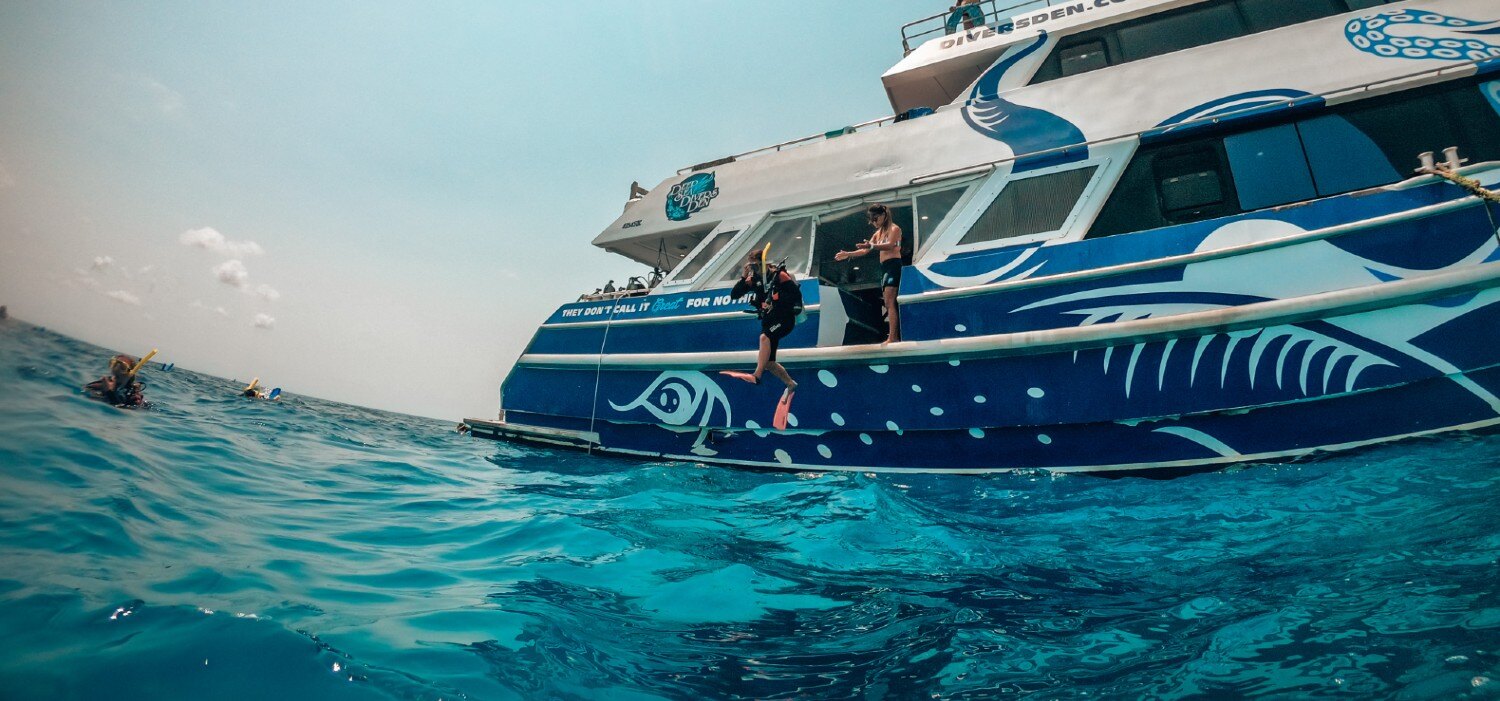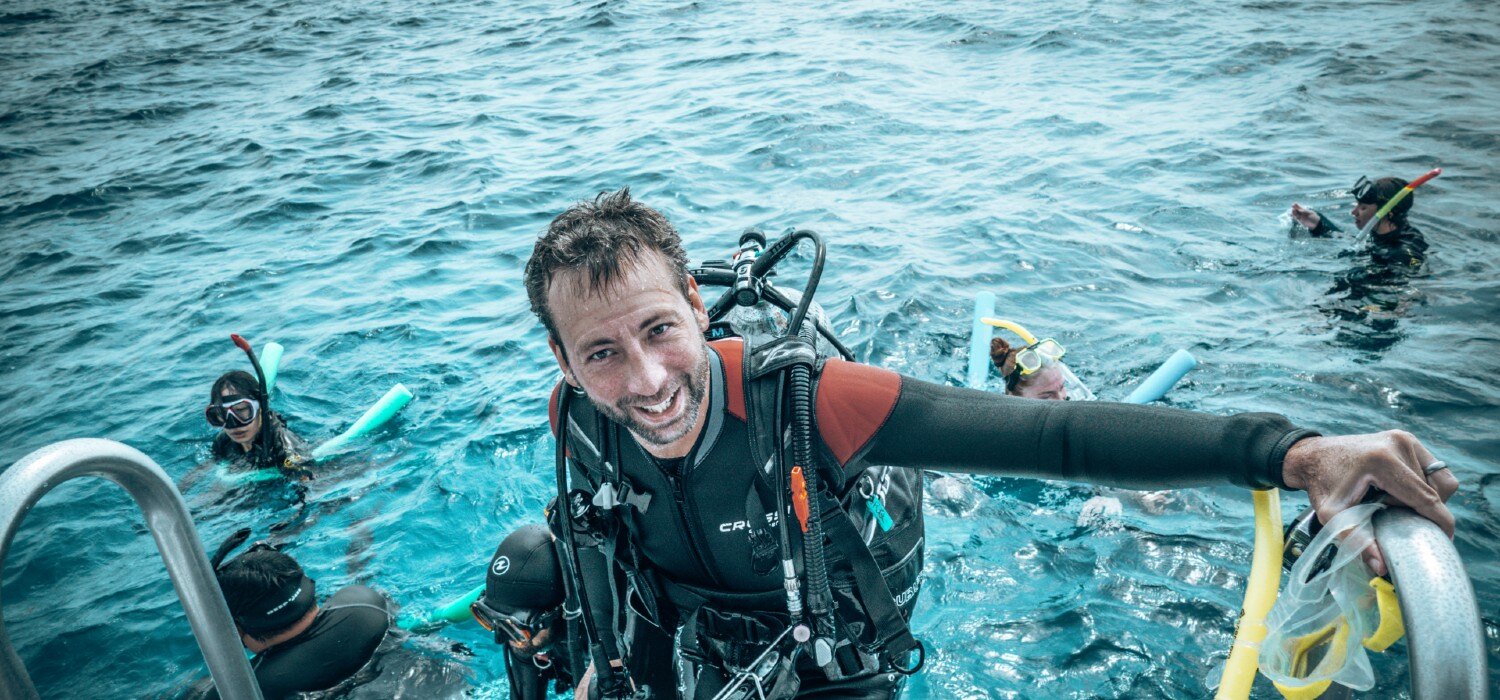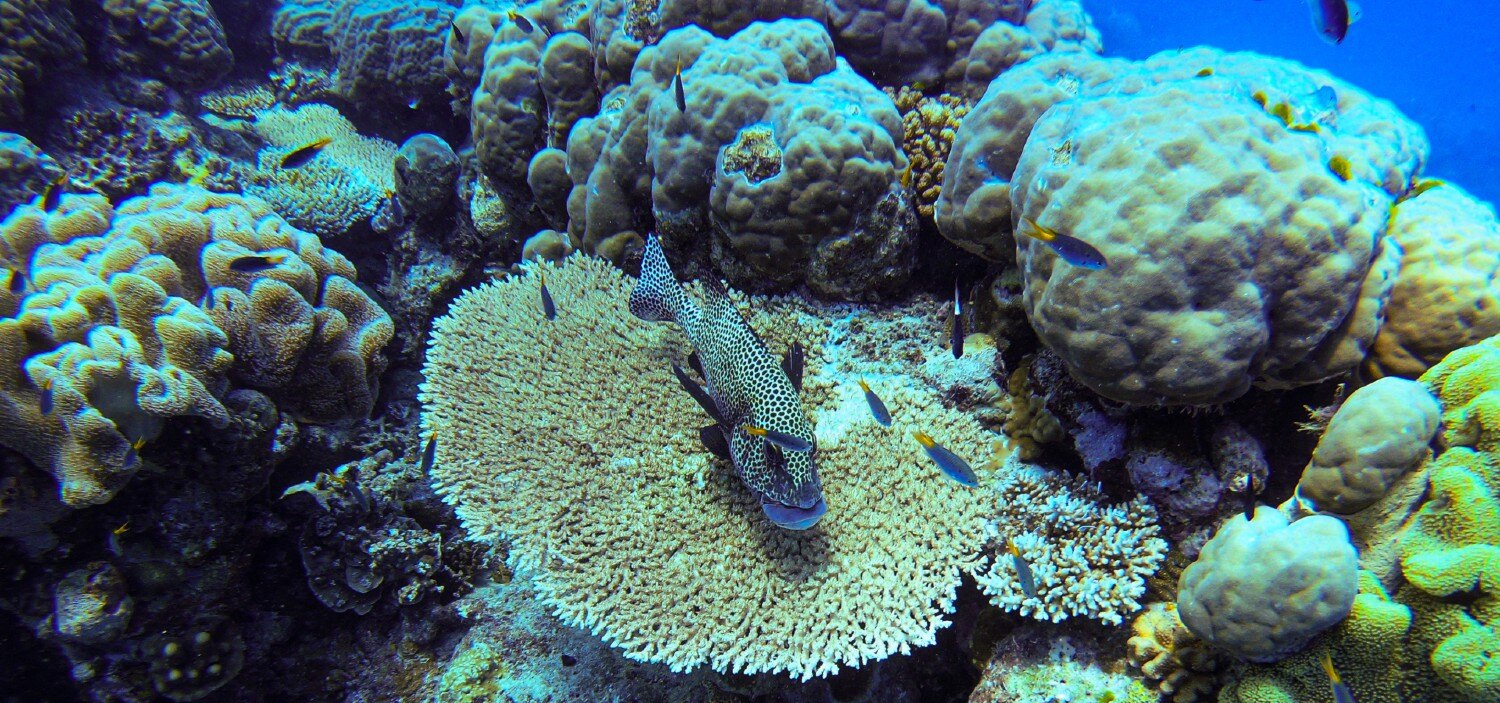A first timer's guide to scuba diving
Strap on that scuba mask and slip on your fins, it’s time to explore an underwater world! If you’re considering learning to scuba dive, you’ve made a brilliant choice; scuba diving, while it can be pricey, is one of those sports you’ll never regret learning. It might put a dent in your wallet, but the joy of seeing your first anemonefish, reef shark or even bright blue corals billowing in the current is something so magical that its almost priceless. But what do you need to know as a total novice? We’ve got you covered in this guide to diving for the first time.
Learning to scuba dive
Now there are two ways to get yourself into scuba diving: dipping your toe in the proverbial water with an Introduction to Scuba Diving, or the full-fledged Open Water certification.
Introduction to Scuba Diving: The introductory day is just what it says on the tin – a chance to get acquainted with scuba diving. Usually this means spending a day with a qualified instructor giving you the bare bones of what you need to know – how to breathe underwater, how to inflate and deflate your BCD (buoyancy control device), through to keeping yourself afloat and key safety notes. What’s great about the introductory course is that you can see if scuba diving is for you without the investment of time and money into the full Open Water course. What’s not ideal is that if you later decide to do your Open Water course, you won’t get any ‘credits’ towards it.
Open Water certificate: Any diver worth their fins (and who wants to go down to 18 metres) has to do an Open Water certificate, to be able to hop around the world and check out the dive sites dotted around some of the globe’s most beautiful places. The Open Water is usually four full days – one and a half days of theory, a day spent in the swimming pool and then another one and a half days out on the ocean doing your qualifying dives. Granted, the theory part isn’t the most fun, but you’ll get a good grounding for scuba diving plus it’s a necessary evil – if you want to explore the breath-taking landscapes under the water’s surface, you need it.

How to choose your scuba diving destination
Now comes the fun part – choosing your exotic destination to try out scuba diving! There are so many places you can learn to dive that it’s almost impossible to list them all. But, here are a few ideas:
Koh Tao, Thailand: It is famed as the ‘cheapest place in the world to learn to dive’, and you’ll find yourself in a scuba paradise on this Thai island. Learning to dive in Koh Tao is totally pocket-friendly and yet you’ll find yourself at a top-notch dive school, with highly qualified instructors and impeccable safety records. Plus, the relaxed island life appeals to many – when you’re not in fins you’ll be in flip flops, watching some epic sunsets from white sand beaches.
The Great Barrier Reef, Australia. It’s a dream sparked by many a David Attenborough documentary – diving on the Great Barrier Reef. And the reality is even better. While the reef suffered some bleaching events a few years ago and of course is a victim of climate change’s effect on the oceans, it is still teeming with beautiful fish and brightly-coloured corals. Of course the Australian dollar is pretty strong and so diving in Cairns (one of the easiest places to access the Great Barrier Reef) won’t come cheap, but you’ll have all the stories to bring back home to the UK with you.
Indonesia. The country is more than just Bali and definitely more than just smoothie bowls, rice fields and instagrammable swings – it boasts some of the most incredible diving in the world. Whether it is doing a liveaboard vessel near the pink beaches of the Komodo islands, checking out underwater statues off the Gili islands, marvelling at the graceful Manta Rays, that swarm near Nusa Penida or making the long trek up the country to the remote but absolutely insanely beautiful, Raja Ampat, Indonesia is a great place for first time divers.
London, United Kingdom: Surprised? You can actually do part of your certification right here in the UK. You can do the theory online (or in a classroom setting), and the swim section in a heated pool, like the dedicated one in Chiswick. You’ll then be taken to do your qualifying dives at a local lake or quarry! It’s not the most exciting but you’ll have done all the prep work closer to home and then can just tag on your first ‘real’ ocean dive in somewhere a little more tropical. It means less time in the classroom on that deserted island. Surely that’s worth considering?
How to choose your dive certification
There is a lot of discussion in dive circles around which of the ‘big two’ dive certifications is better. That of PADI (Professional Association of Diving Instructors) or SSI (Scuba Schools International). So, which one should you choose? The simple answer? Whichever your location and dive school of choice offers.
There is really not much of a difference between the two and both follow the strict international standards of scuba’s governing board, the WRSTC (World Recreational Scuba Training Council).
Also, if you do your initial certification with one, you can still do fun dives with dive shops affiliated to the other. And if you decide to go for an advanced certificate, even then you can swap.

What to know before you go – preparing for your scuba trip
Now you’ve made all your decisions. You’ve booked those flight tickets, you have your Caxton multi-currency card in hand and you’re ready to start your (hopefully long and illustrious) scuba diving career. But it’s worth checking off a few boxes before you shimmy into that wetsuit and strap on that oxygen tank.
The first? Fitness. You don’t need to be an athlete to be a scuba diver, but you definitely need to be able to do two things: complete a 200m swim and ‘float’ (well technically tread water) for ten minutes. Both of these are non-negotiable parts of an open water certificate.
You can do the swim at any pace using any stroke but it’s worth trying to get a few laps in a local pool before you go, just to set your mind at ease.
You also don’t need to be the strongest swimmer underwater (many people aren’t) but feeling confident when scuba diving is half the battle.
Another thing to think about is whether you are the kind of person who prefers their own gear. It’s not advisable to bring your own wetsuit or flippers but you might want to invest in your own scuba mask, or even your own dive watch if you think you’ll be using it in the future.
A well-fitting mask is a crucial bit of equipment and, especially for those with long hair or a beard, you might want to try and get your own custom mask. If not, pack a jar of Vaseline to put on your dive shop’s mask to ensure it fits snugly against your face.
The last thing to consider is your travel insurance. Does it cover scuba diving?

The costs of scuba diving
Last, but undoubtedly not least, what does scuba diving cost? This is a little more difficult to pin down as costs vary wildly depending on where you’re going to dive. Doing your beginner’s certificate in Koh Tao will set you back around 240 GBP including all your tuition, equipment and even discounted accommodation options of only 10 GBP a night, whereas the same course in Cairns starts at 300 GBP and has quite a few ‘hidden extras’.
If you’re thinking about where you can squeeze your scuba diving trip around other holidays this year, have a read of Caxton’s 2020 holiday calendar for some travel inspiration.
Lee is a wandering writer and one half of the Travel Scribes, a blog dedicated to travelling, writing and everything social media. When she’s not quenching her thirst for wanderlust, she is most often found behind her laptop, bashing out blog posts and bingeing on cheesy cat videos.
The Caxton Currency Card makes travel money simple. Enjoy fee-free spending abroad and get the best currency rates on your next adventure with your Caxton Currency Card. Apply for yours today, or top up your existing card.



